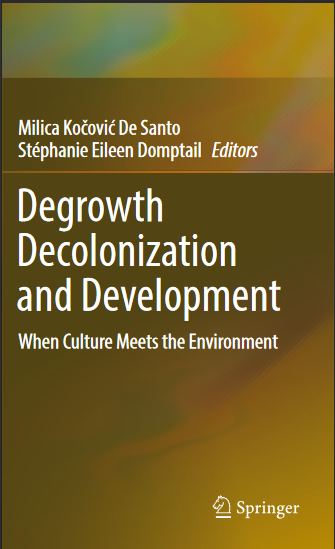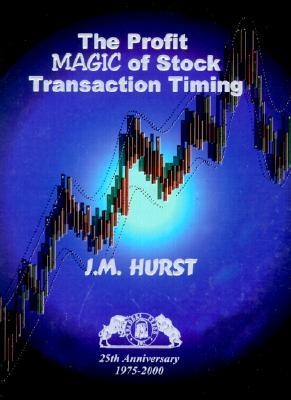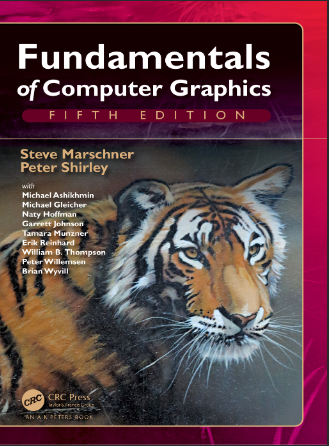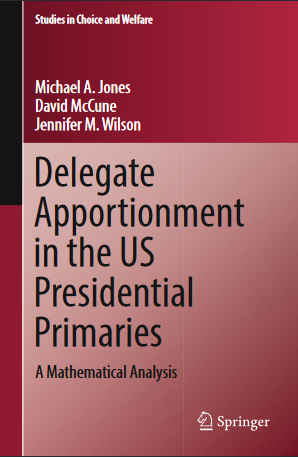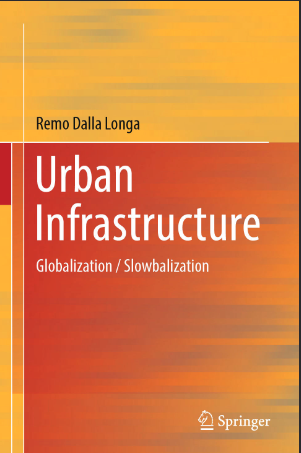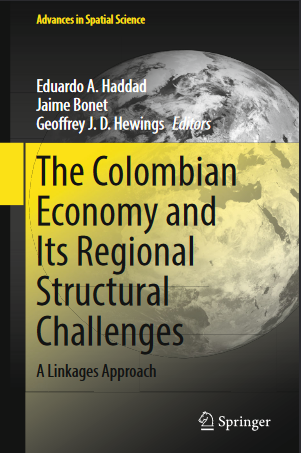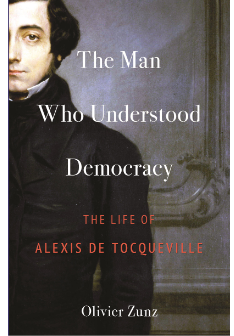موضوعات
آموزش و پرورش
ادبیات و زبان
پزشکی، دندانپزشکی و داروسازی
تاریخ و جغرافیا
داستان و رمان
دیگر
دین و فلسفه
روانشناسی
ریاضیات و آمار
سلامتی، تناسب اندام و رژیم غذایی
شیمی و پلیمر
علوم اجتماعی و حقوق
علوم زیستی و بیوتکنولوژی
فیزیک و نجوم
کامپیوتر و اینترنت
کتابهای کودکان و داستان
کسب و کار و اقتصاد
کشاورزی و دامپزشکی و غذا
معماری
مهندسی و فناوری
هنر و تئاتر
محصولات
OET Optometry_ Official OET Practice Book 1_ For tests from 31 August 2019_nodrm - PDF
نویسندگان: خلاصه: OET is an international English language test that assesses the language proficiency of healthcare professionals seeking to register and practise in an English-speaking environment. It provides a validated, reliable assessment of all four language skills – listening, reading, writing and speaking – with the emphasis on communication in healthcare professional settings. OET tests candidates from the following 12 health professions: Dentistry, Dietetics, Medicine, Nursing, Occupational Therapy, Optometry, Pharmacy, Physiotherapy, Podiatry, Radiography, Speech Pathology and Veterinary Science. Candidates are encouraged to prepare thoroughly for their OET test. Language proficiency and test taking skills For more information about OET including the latest test dates and a complete list of test locations and preparation providers, as well as access to our free test preparation package Start for Success, visit the OET website: www.occupationalenglishtest.org About the test OET assesses listening, reading, writing and speaking. There is a separate sub-test for each skill area. The Listening and Reading sub-tests are designed to assess the ability to understand spoken and written English in contexts related to general health and medicine. The sub-tests for Listening and Reading are common to all professions. The Writing and Speaking sub-tests are specific to each profession and are designed to assess the ability to use English appropriately in the relevant professional cDegrowth Decolonization and Development When Culture Meets the Environment - Original PDF
نویسندگان: خلاصه: Degrowth Decolonization and Development offers a collection of seven original case study analyses, followed by a synopsis of concepts contributing to decol- onize development by shaking the hegemony of the Western paradigm. The partici- pating researchers met when presenting their work in Decolonization and Degrowth panels within two International Degrowth Conferences held in July (organized by Manchester University together with the Ecological Economics conference) and in August 2021 in The Hague, Netherlands. Ranging from cultural studies, critical development studies, cultural policy, cultural political economy, political economy, heterodox economic approaches, eco-feminist political ecology, to anthropology and sociology, the collection of chapters provides a broad interdisciplinary oversight of the contemporary (developmental, environmental, economic, social, cultural) chal- lenges. Precisely this interdisciplinary approach facilitates the understanding of the critical contemporary context with its complex intermingling of (positionality) crises. Our multiple analyses of Western thought, capitalist and patriarchal systems rooted in case studies depict rebellions to this hegemonic system and challenge it from complementary angles, which is the reason why we found the degrowth as most suitable framework to understand the current contemporary context and seek for post-growth alternatives. The first chapter introduces the most important concepts such as: permanent crisis, modernity and colonnialism, with associated dichotomies encaptured in the Western paradigm. We embrace the position that colonialism is not derivative but constitutive of modernity as “there is no modernity without colonial- ism” (Mignolo and Walsh 2018: 4; 107) and modern capitalism, where the cultural potential for radically necessary changes is essential—as a driver of the degrowth forces that reflects the eternal relations between man and naturThe Profit Magic of Stock Transaction Timing - Original PDF
نویسندگان: خلاصه: Can a $10,000 investment yield $1,000,000 in a year? In five years? If so, what is the risk involved? These are the kinds of questions to which this work is addressed. Such fantastic results are possible in the stock market. Individual issues fluctuate widely enough and often enough to permit this and more. Techniques are presented here that put an average yield on invested capital of 10% per month, well within the realm of possibility. Compounding profits at this rate, such a yield can return $1,000,000 on a $10,000 investment within 50 months. An actual trading experiment will be described using these principles which produced an 8.9% yield per transaction--every 9.7 days. Such a yield, if continued, compounds $10,000 to $1,000,000 in 15 months. If such results can be attained in the market -- why isn't everyone doing it? The answer is complex, but the elements are simple: effort, knowledge and psychological barriers. Any goal this worthwhile requires time and effort. Most investors, amateur and professional do not have the kind of analytical background needed to shear through rumour, opinion, and adage to get at the basis of why stock prices change. And finally, even with knowledge in hand, many investors lack training in the emotion-logic balance required for success. Nevertheless, all of these obstacles can be overcome. It is the purpose of this book to provide you with the essentials. The results are yours if you care to apply yourself with sufficient intensity. Investment operations will be presented here in a deliberately unorthodox manner. We will turn our backs firmly on all cliches, adages, and market lore that will not withstand critical scrutiny. Where necessary, we will not hesitate to form new ones that do fit the facts. You will find here that the big money in investing stems from the principle of "profit compounding:---of short-term trades. It is further shown that this potential cannot be exploited in an optimum manner without a large improvement in transaction-timing capability that cannot be achieved using traditional investment methods. You will be exposed to: a concept of profit maximization; a model of stock price motion with prediction implications; an explanation of why chart patterns form---and how to use this knowledge to your profit; step-by-step methods for using the price-motion model to generate definite "wait," "buy," "hold," "sell," "sell short," "cover short," and "protect profit" signals; an explanation of why moving averages work and how to design your own for use in transaction timing; a complete trading method: how to select issues, how to analyse them for action signals, and how to improve your chances of turning and keeping a profit; the extent to which you should be concerned by chance factors, whether or not you should sell in case of war or financial crisis; the reasons why psychological considerations can affect your profits and what you can do about it; an introduction to numerical analysis and spectral analysis, upon which the results on the book are based. The problems of trading techniques and methods are dealt with directly. Enough methods and references are included to permit further research if desired.Handbook of Hope Theory, Measures, & Applications - PDF
نویسندگان: خلاصه: This Handbook of Hope simply would not have happened without a small army of graduate students who, over the past decade, have come into my office one by one and suggested yetanother angle from which we could view hope. In that sense, what has come to be called hope theory has been like a gemstone that, when held to the light, sends shimmers of ideas about yet other possible implications or experiments. I have produced previous theories about reactions to personal feedback, uniqueness seeking, excuse making, and reality negotiation, hue none of chose have continued co produce the sufficiently intriguing questions to get me revved up for yet another experiment. Hope theory has been a great energizer at a time in my life when I have needed it. For the past seven years I have had a severe, unrelenting, and undiagnosed chest pain that is with me from my fim waking moments to the time th.at I slip off into sleep. Although I have been taking powerful pain killers, I think that none of those pills matches the positive effects of my getting lost in theory and research and work- ing with my students. At age 55 (by the time this book is published), I still enjoy the theory and bench science to the same degree that I did as a brand new 27-year- old assistant professor here at Kansas. And so, I have much for which to be th:.ink- ful.Fundamentals_of_Computer_Graphics - Original PDF
نویسندگان: خلاصه: Preface This edition of Fundamentals of Computer Graphics includes substantial rewrites of the material on shading, light reflection, and path tracing, as well as many corrections throughout. This book now provides a better introduction to the tech- niques that go by the names of physics-based materials and physics-based ren- dering and are becoming predominant in actual practice. This material is now better integrated, and we think this book maps well to the way many instructors are organizing graphics courses at present. The organization of this book remains substantially similar to the fourth edi- tion. As we have revised this book over the years, we have endeavored to retain the informal, intuitive style of presentation that characterizes the earlier editions, while at the same time improving consistency, precision, and completeness. We hope the reader will find the result is an appealing platform for a variety of courses in computer graphics. About the Cover The cover image is from Tiger in the Water by J. W. Baker (brushed and air- brushed acrylic on canvas, 16” by 20”, www.jwbart.com). The subject of a tiger is a reference to a wonderful talk given by Alain Fournier (1943–2000) at a workshop at Cornell University in 1998. His talk was an evoca- tive verbal description of the movements of a tiger. He summarized his point: Even though modelling and rendering in computer graphics have been improved tremendously in the past 35 years, we are still not at the point where we can model automatically a tiger swimming in the river in all its glorious details. By automatically I mean in a way that does not need careful manual tweaking by an artist/expert. The bad news is that we have still a long way to go. The good news is that we have still a long way to goDelegate Apportionment in the US Presidential Primaries A Mathematical Analysis - Original PDF
نویسندگان: خلاصه: The purpose of this book is to examine the mathematics of the delegate allocation process in the US presidential primaries. The US presidential primaries are a series of state elections held every four years that determine the Democratic and Republican Parties’ nominees for president in the general election. Presidential candidates in each party are awarded delegates based on their shares of the vote in each state contest. At the end of the primary season, each party holds a national convention. The candidate with a majority of state delegates, after one or more rounds of voting, is selected to be the party’s nominee for president. From a mathematical standpoint, the question of how to allocate delegates is largely a problem of apportionment. Apportionment problems arise when a fixed quantity (such as a number of delegates) must be divided among several constituents (such as candidates) in proportion to some attribute (such as vote share), so that each portion is a whole number. Since delegates are individuals and cannot be divided, their allocation is a matter of apportionment. Apportionment or similar allocation problems occur at multiple stages in the delegate selection process from determining how many delegates each state receives, and how they should be divided between statewide and district delegates, to determining what happens after each primary when the delegates must be awarded to the candidates based on how well they do in the election. Apportionment has been well-studied in the context of allocating state represen- tatives to the US House of Representatives in proportion to state populations. It has also been widely analyzed for its role in proportional representation systems where party seats are awarded to parties based on the vote distribution. It is less well-known in the case of apportioning delegates in the US primaries. Thus the examination of apportionment applied to delegate allocation involves both an identification and anal- ysis of new apportionment methods as well as an evaluation of old and new criteria by which to evaluate their properties. The goal of this book is to do both. We have spent several years researching delegate allocation in presidential primaries and were inspired to write this volume because of the interesting aspects of apportionment arising in this context. The book’s vii viii Preface origin can be traced to 2016, when we observed that the 2016 Georgia Repub- lican party adopted an apportionment method for its state primary that was unique and perhaps the most interesting method we had encountered. This motivated us to investigate the methods used by other state parties, many of which are new, and to consider how the allocation of delegates is affected by elimination thresholds—the minimum levels of support required to receive delegates—and the overall structure of the state delegates selection plans in which delegates are apportioned based on vote distributions in each district and statewide. This led us also to consider how the goals of delegate apportionment differ from that of house or party apportionment— most noticeably in that the state primaries occur over time, and that the end result is not political representation but the declaration of a winner. This means that the usual criteria for evaluating apportionment need to be rethought in an effort to deter- mine what features of traditional apportionment theory are most relevant to delegate apportionment and which features are not.Urban Infrastructure Globalization / Slowbalization - Original PDF
نویسندگان: خلاصه: The book addresses the issue of urban infrastructures within globalization. Slowbal- ization is then introduced rather than deglobalization to indicate important variables that could stand in the way of a prevailing reading key in the book. Wiig et al (2022) argue that starting from a volume (Graham, Marvin, 2001 ) the study of infrastructures has been brought to the center of urban studies and has inspired the infrastructural turn within urban sciences. Infrastructures, and urban ones in particular, precisely because of their differentiation, specialisms, formulas and organizational models that underlie their assembly, governance and management have always appeared residual compared to other themes such as the city, urbaniza- tion, the form urban, competitive advantage, applied globalization; or on another more technical side, specialisms such as engineering or other technical disciplines called upon to assemble and update the various infrastructures in various ways. Moss (2020) on Berlin, which tells the story of that city (1920–2020) through infrastructures, removing them from invisibility, may be singular, but it is not. Putting them at the center offers new ideas and angles both from the point of view of economics, finance, assembly technique and above all the spatiality of the city within the different forms of globalization. Today, urban infrastructures are also a fundamental part of the economy and finance and follow their evolution and trajectory. They assume particular impor- tance starting from the conjugation with the term globalization; we have seen a rapid transformation of the interconnected infrastructure precisely with the growth of glob- alization and the global city. The analysis focused more on what has been called the western global city and the context of the brownfield infrastructureThe Colombian Economy and Its Regional Structural Challenges A Linkages Approach - Original PDF
نویسندگان: خلاصه: Preface I have been teaching a Ph.D. course on “Applied General Equilibrium Models” at the University of São Paulo, Department of Economics, since 1999. Over the last editions of the course, the material was built around specific countries or regions, selected to be the object of modeling practices undertaken by the students. This praxis turned out to be very rewarding for the students since they were motivated to apply different techniques to study concrete problems in a common economic system. Throughout this process, they had the opportunity to collaborate among themselves and interact with scholars from the study regions, often generating scholarly publications. We had already worked with countries such as Brazil, Chile, Greece, and Paraguay, and with different regional contexts, especially within Brazil. Colombia had always been a top candidate to receive our attention. Our previous engagement with colleagues from the Centro de Estudios Económicos Regionales (CEER), a research center specialized in Regional and Urban Economics at the Banco de la República— the Colombian Central Bank—provided a unique opportunity to develop a special edition of the course on the country. During a visit to Cartagena in 2019, Jaime Bonet and I finally agreed to use Colombia as the case study in the forthcoming edition of the course. We designed the Colombian edition in innovative and challenging ways, raising the bar for the expected outcomes, including a workshop to be hosted in Cartagena in 20201 and the publication of a volume including the contributions by different authors forming a cohesive unit. We built the activities upon solid coEnvironmental Regulations and Industrial Competitiveness Case Studies of Toxic Industries in Southern California - Original PDF
نویسندگان: خلاصه: 1 Chapter 1 Environmental Regulations and Industrial Competitiveness Abstract Industries in the U.S. emit billions of pounds of toxic chemicals into the environment every year, resulting in a major risk to human health. Many economists and policy makers, however, are strongly opposed to environmental regulations based on an assumption that regulations lead to a loss of jobs and a declining stan- dard of living for U.S. citizens. The empirical literature on this question has pro- duced mixed results, and this chapter critically assesses several conceptual and methodological issues that are embedded in this literature. Our thesis is that strin- gent environmental regulations have the potential to effectively and efficiently reduce toxic emissions from polluting firms and industries while having a negligible impact on the economic competitiveness of firms and industries. We investigate this thesis through three empirical case studies of polluting industries in Southern California that are highly regulated by the South Coast Air Quality Management District (AQMD): metal finishing, wood furniture, and dry cleaning. We also attempt to reveal the institutional process by which firms comply with environmen- tal regulations. Keywords Environmental regulations · Economic competitiveness · Environmental pollution · Economic externalities · Market failure · Environmental compliance · Technological uncertainty · Innovation · Adoption Introduction Over the last half century, the US federal government has played an active role in regulating the emission of toxic chemicals from polluting firms and industries (Rosenbaum, 2019; Telsey, 2016). Congress passed the Clean Air Act of 1970 “to protect and enhance the quality of the nation’s air resources so as to promote the public health and welfare and the productive capacity of the population” (US Environmental Protection Agency, 2007, p. 2). Congress also created the EPA (Environmental Protection Agency) in 1970 to implement and enforce the nation’s environmental lawThe Man Who Understood Democracy - Epub + Converted PDF
نویسندگان: خلاصه: Go back in time. Examine the babe when still in its mother’s arms. See the external world reflected for the first time in the still-dark mirror of his intelligence. Contemplate the first models to make an impression on him. Listen to the words that first awaken his dormant powers of thought. Take note, finally, of the first battles he is obliged to fight. Only then will you understand where the prejudices, habits, and passions that will dominate his life come from. In a manner of speaking, the whole man already lies swaddled in his cradle.1 Alexis de Tocqueville made these observations in Democracy in America to explain his rationale for studying America’s “point of departure.” Of course, the beginning is also where the biographer must start. For the young Tocqueville, that external world was dominated by figures from the highest military and administrative nobility of the Ancien Régime, survivors of the Revolutionary Terror, loyal to the exiled Bourbons, and dead set against the liberal views Tocqueville himself would eventually embrace. Presaging this divergence, Tocqueville displayed considerable independence of mind at an early age, and he repeatedly flouted expectations. At the same time, he developed the habit of casting doubt on much of what he did and sawآیا کتاب مورد نظر هنوز بر روی سایت قرار نگرفته است؟ جای نگرانی نیست! کافی است بر روی گزینه سفارش کتاب کلیک کرده و درخواست خود را ثبت کنید. در کمتر از چند ساعت کتاب شما را آماده خواهیم کرد.

